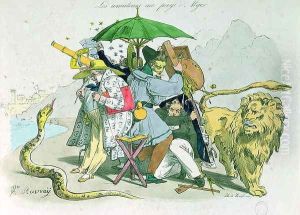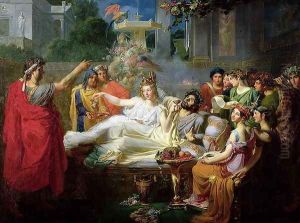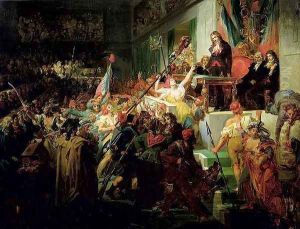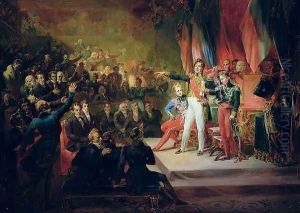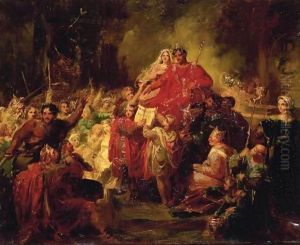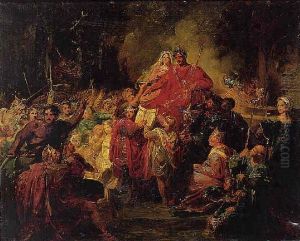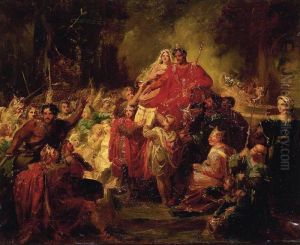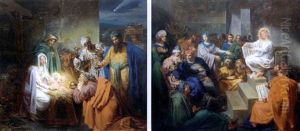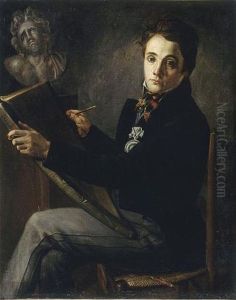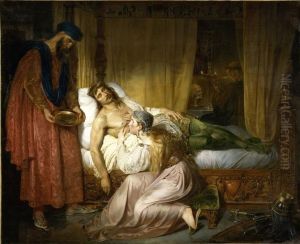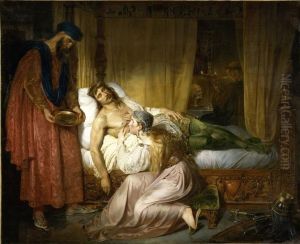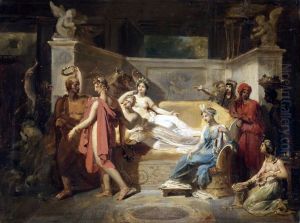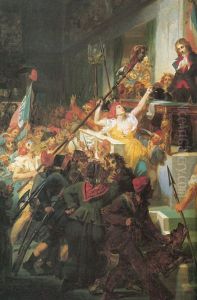Felix Auvray Paintings
Felix Auvray was a French painter, draughtsman, and lithographer whose career, though brief due to his early death, contributed notably to the Romantic movement in France. Born in 1800 in Lorient, France, Auvray developed an early interest in the arts, which was supported by his education and the cultural milieu of his time. Despite the brevity of his life, dying at the young age of 33 in 1833, his work left an indelible mark on the French Romantic school, characterized by its emphasis on emotion, individualism, and the sublime.
Auvray's artistic journey was marked by his exploration of historical and mythological subjects, imbued with a passionate and often dramatic intensity. He was particularly known for his masterful use of color and light, which he employed to enhance the emotional expression in his paintings. His works often depicted scenes of heroism and tragedy, drawn from classical antiquity and medieval history, reflecting the Romantic fascination with the past and the exotic.
Despite his talent, Felix Auvray was not widely recognized during his lifetime, a fate not uncommon among many artists of his era. It was only posthumously that his contributions to French art began to be appreciated. His works, which include a mix of oil paintings, lithographs, and drawings, are now considered important for their contribution to the development of Romanticism in France. They are studied for their innovative approach to composition and their skillful rendering of light and atmosphere.
Auvray's early death in 1833 curtailed a career that was just beginning to flourish. Nevertheless, his existing works provide a window into the vibrant and tumultuous world of early 19th-century French art. They embody the spirit of Romanticism, with its emphasis on emotion, the natural world, and the exploration of historical themes. Today, Felix Auvray's art is appreciated for its beauty and intensity and serves as a testament to the artist's skill and passion, securing his place in the history of French art.
